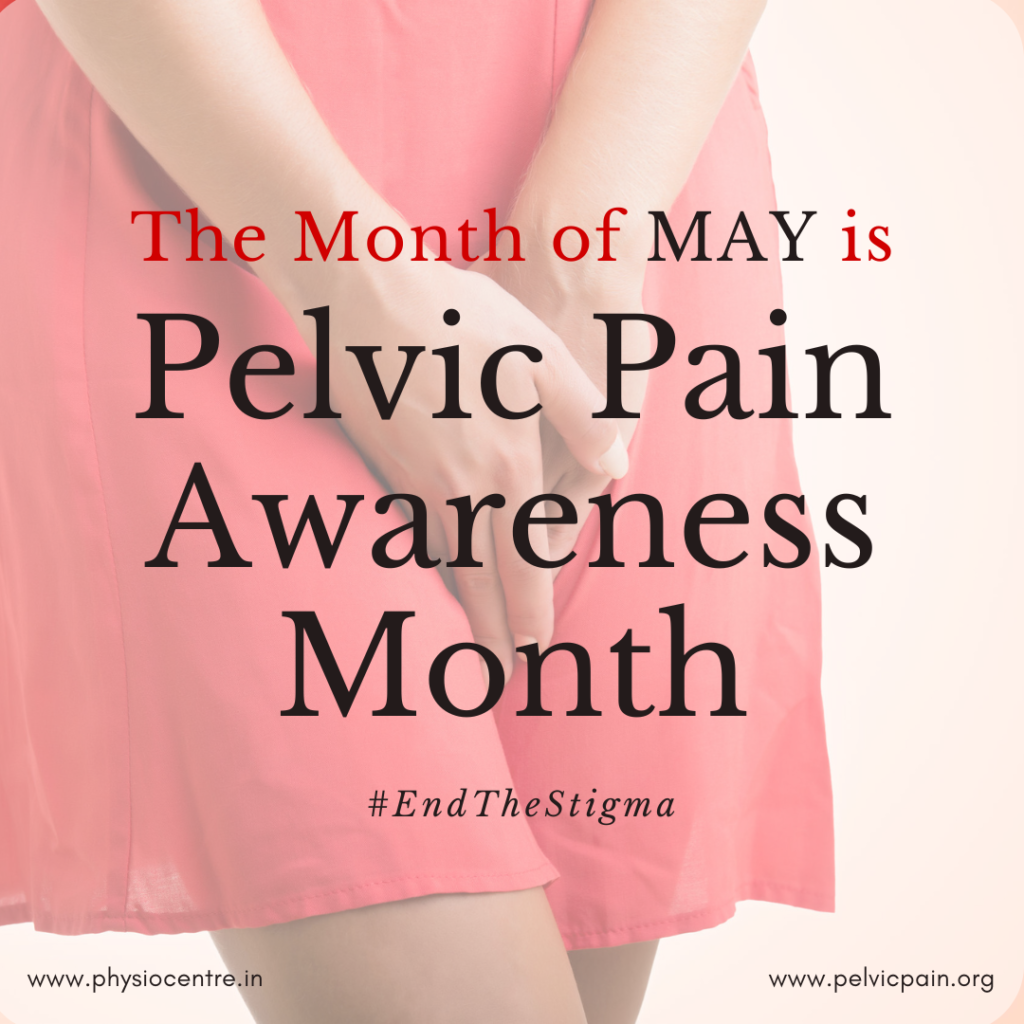May is Pelvic Pain Awareness Month

May is officially Pelvic Pain Awareness Month, thanks to the International Pelvic Pain Society (IPPS), who made the designation back in 2017.
According to the IPPS, "Chronic abdomino-pelvic pain can be a debilitating condition that can have significant consequences on an individual’s physical, mental, economic, and social well-being."
Chronic Pelvic Pain (CPP) is any pelvic pain that lasts for more than six months and occurs in the pelvis or lower abdomen. Chronic pelvic pain is one of the most common health care problems in our society. It is estimated that 25 million women suffer with chronic pelvic pain. Approximately 25% of women with CPP may spend 2-3 days in bed each month. More than half of the women with CPP must cut down on their daily activities 1 or more days a month and 90% have pain with intercourse (sex). Almost half of the women with CPP feel sad or depressed some of the time. Although CPP is more prevalent in women, it can also occur in men where it is often known as chronic abacterial prostatitis. In men, the pain can manifest in the perineum, rectum, prostate, penis, testicles and abdomen
Some symptoms of CPP include:
- Pain during or after sex
- Pain before or during period
- Pain before or during ovulation
- Painful bowel movements
- Painful urination
- Infertility
- Cramping
- Abdominal Bloating
- Lower back pain (chronic)
- Urgency to urinate
- Pelvic pressure
How CPP is diagnosed?
Your health care provider will take a thorough history of your problem. It is very important to give your physician a detailed and accurate description of the problem. The health care provider will also do a physical examination. After this, the health care provider will be able to determine what lab tests and procedures might be needed to find the reasons for your pain.
Here are some of the conditions that create pelvic pain:
- Pregnancy
- Childbirth
- Endometriosis
- Adenomyosis
- Interstitial Cystitis (IC)
- Urinary tract infection (UTI)
- Pelvic Inflammatory Disease
- Pelvic Congestion Syndrome
- Irritable bowel syndrome (IBS)
- Uterine Fibroids
- Levator Syndrome
- Pelvic Organ Prolapse
- Vulvodynia
Conversations are beginning to flow out loud regarding pelvic pain and discomfort, there is no reason to live in discomfort and pain. Know that if you are experiencing pelvic pain, you are not alone and there is professional help available to help get you better. In my practice as a prenatal and postpartum exercise specialist, I see women with a variety of pelvic floor dysfunction symptoms and I highly recommend every woman seek a specialized pelvic floor physical therapist regardless if they are piercing pain, leaking or pressure and they also follow an exercise program that is specific for their needs during and after pregnancy.
What can I expect from treatment for CPP?
First off, you need to be realistic in your expectations and hopes for treatment. You should share your expectations and experiences with your doctor and you should be part of the decision-making process when selecting treatment. However, it is important to remember that some CPP can never be completely cured and instead your provider may focus on improvements in quality of life and function instead of pain. This may involve learning resilience and how to cope with pain flares.
Don’t expect instant results. Be patient with your treatment; follow all your health care provider’s instructions. Treatments may
take up to 3-6 months to work, so continue to follow instructions even if you don’t see results right away. During your treatment and therapies, you will have set appointments with your health care provider and therapist rather than just coming in when the pain is particularly bad. You may start with weekly or monthly visits. You and your health care provider will decide whether these should be more or less frequent based on your progress. Successful treatment means decreasing your pain to a low level so that you can enjoy doing the things you want to do again.

